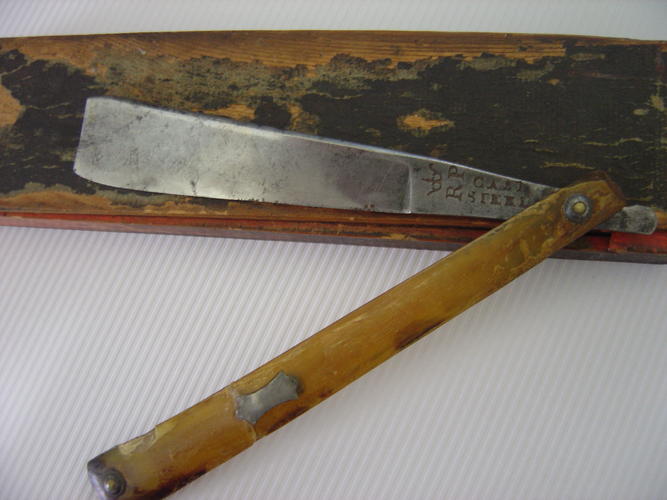Results 1 to 10 of 16
Thread: Pre 1800 Razor
Threaded View
-
12-03-2012, 09:45 PM #1Junior Member

- Join Date
- Dec 2012
- Location
- Denton, Texas
- Posts
- 5
Thanked: 0 Pre 1800 Razor
Pre 1800 Razor
I came across this razor and the wooden box that it came in a few years ago at an estate sale in up state New Jersey. From what I have found out it will date pre 1800s because of the blade edge and shank running in a straight line along with the short tail. I know a little about the cast steel stamping but the question is, what is the crown and letters R. P. representative of.
I am new to the forum and any thoughts or answers would really be appreciated.



 19Likes
19Likes LinkBack URL
LinkBack URL About LinkBacks
About LinkBacks






 Reply With Quote
Reply With Quote